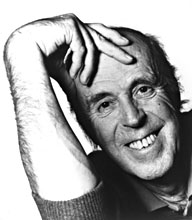
Systems and conventions
readings for this week:
Ellen Lupton and Abbott Miller “Modern Hieroglyphs”
Paul Griffith “Sound-Code-Image"

musical notation
John Cage
Earle brown

When I was still studying in Boston, I used to haunt a little poetry book shop on Boylston Street. I came across poetry pamphlets by Kenneth Patchen, Henry Miller, Ferlinghetti and Rexroth. Among other things, I found a book called Vision in Motion by Moholy-Nagy, a visual artist - highly experimental stuff. There were also Museum of Modern Art booklets on Calder. And I remember that, in 1949, Life magazine came out with the first major color spread of the abstract expressionists - which was where they called Jackson Pollock 'Jack the Dripper.' "I had been working, for a long time, on how to get out of metric music - probably not even consciously.
I was interested in the constructivism of Schillinger and, at the same time, very devoted to the spontanePollockity of jazz. So that dichotomy was always in my mind. I had begun to meditate on putting these things together in different ways, on how to expand the potentials to include the spontaneity of Pollock and the mobility of Calder. "When I got married and moved to Denver - to be a Schillinger teacher - it was all still in my mind. I would make mobiles, to see what it felt like, and I would paint paintings a la Pollock, to see what the spontaneity felt like.
It was these things, the spontaneity of jazz and the immediacy of what'll-I-do-next.
Paying attention is where it's at for me. I don't care whether I have sixteen
string quartets and nine symphonies, or not. I'm really interested in the creative
process. And if you say that, some wise-guy will say, 'Oh, novelty for novelty's
sake.' It's not that. It's invention. It's experimentation. It's using your
mind, using the culture you're involved with, to expand the possibilities. I
brought a lot of things into my world and was able to make connections between
them, because I was interested.
<http://www.ping.be/logos/kursus/9631.html>